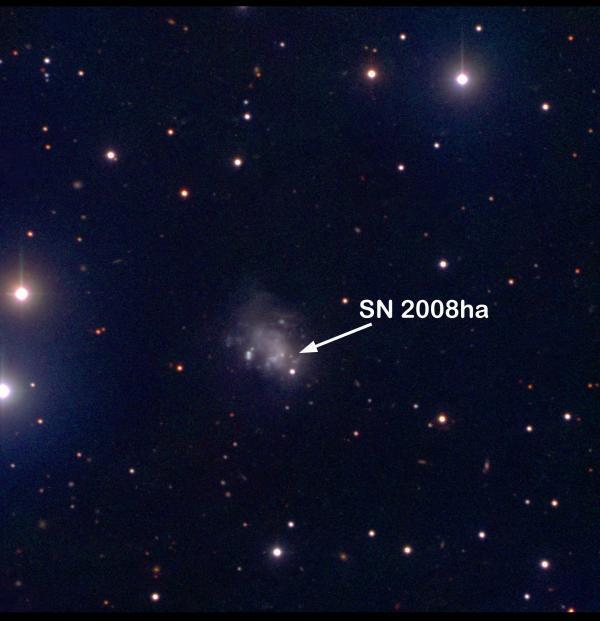Blurred meteor detection
Core-collapse supernovae (also called gravitational supernovae) is one of the most violent phenomena in the universe. They form terrible explosions that end the life cycle of massive stars weighing about 8 times the Sun. When the fuel runs out, the star's core collapses and forms a neutron star or a black hole. At the same time, the outer layers are ejected at very high speeds (1/10 of the speed of light) and shine with billions of stars combined.
The unexpected energy released by a typical meteor exceeds the total energy of the Sun over a period of 10 billion years.
However, some core collapsed meteorites have 10 times less energy and glow than usual. These low-energy explosions often have the presence of hydrogen gas, but in the recent explosion, supernova SN 2008ha is the first fuzzy star who has not detected hydrogen. This study was conducted by an international scientific group, headed by Austrian astronomer Stefano Valenti (of the Royal University, in Belfast, England), the rest of the members came from the Institute of Astrophysics Planck (Germany), Italy National Institute of Astrophysics and many other research institutes.

Image of SN 2008ha meteor shooting on December 30, 2008 at the Calar Alto observatory with the Zeiss Lens 2.2m and CAFOS camera.Why SN is a light red dot marked with an arrow on the image.In the middle of the figure is the UGC 12682 galaxy with a rather irregular shape, the birthplace of this shooting star.(Photo: Stefan Taubenberger, Max Planck Institute of Astrophysics)
The results of the study, published recently in the journal Nature, are based on data collected from Calar Alto (Andalusia, Spain) observatory, Telescopio Nazionale Galileo lens (TNG), Nordic telescope. Optical Telescope (NOT), Liverpool telescope (all three are located in Canary Island, Spain), and the lens Copernico (observatory Asiago, Italy) and other observation devices are smaller.
The data on dimness and absence of hydrogen present makes scientists come up with two hypotheses about the formation of supernova SN 2008ha. In the first hypothesis, the ancestral star of this star is quite heavy in mass, within the binary system, having lost its outer layers due to its interaction with its binary star. The second hypothesis is an explosion because a very heavy star has stripped the shell under the action of stellar winds and formed a black hole due to the collapsed core. If the second hypothesis is proved right, SN 2008ha will contribute significantly to our understanding of the relationship between supernovae and a group of gamma ray bursts.
Research on SN 2008ha is part of a research program to discover the secrets of explosions in the universe. This project involves an international scientific group from many different institutes and mobilizes observational data from many observatories and astronomical tools around the world. Surely this discovery will bring even more interesting news in the near future.
Refer:
Valenti et al.Supernova without a hydrogen envelope A low-energy coreNature, 2009;459 (7247): 674 DOI: 10.1038 / nature08023
- The reasons why your eyes are blurred
- Things you don't know about meteor
- 4 meteor showers prove you are the luckiest
- It is humid, how is it handled when the glass is blurred with steam?
- The first meteor shower of 2018 peaked at dawn 4/1
- Guide to photographing meteor shower phenomenon
- Images of the most beautiful meteor shower in the past 15 years
- See the king of the upcoming meteor shower
- Choose a location to admire the most beautiful meteor shower tonight?
- Guide to observing the meteor shower of Leonids on November 17
- Eta Aquarid meteor shower peaks from today
- Japan produces artificial meteor shower
 Van Allen's belt and evidence that the Apollo 11 mission to the Moon was myth
Van Allen's belt and evidence that the Apollo 11 mission to the Moon was myth The levels of civilization in the universe (Kardashev scale)
The levels of civilization in the universe (Kardashev scale) Today Mars, the sun and the Earth are aligned
Today Mars, the sun and the Earth are aligned The Amazon owner announced a secret plan to build a space base for thousands of people
The Amazon owner announced a secret plan to build a space base for thousands of people